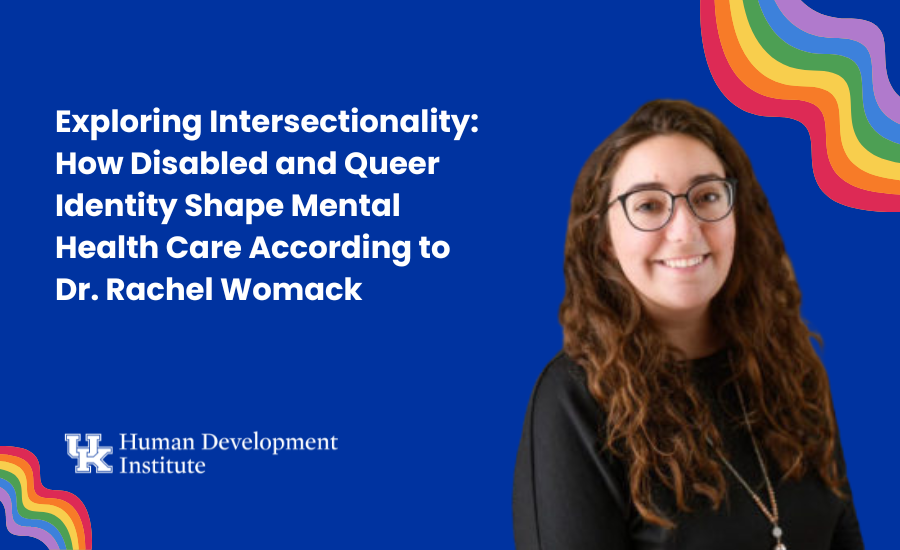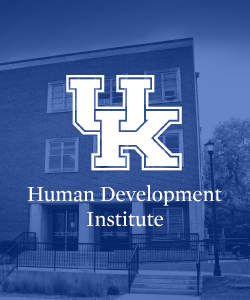Research has shown a strong connection between queer identity and disability—a connection Dr. Rachel Womack is deeply familiar with.
“The research shows that folks with disabilities are significantly more likely to identify as queer, and vice versa,” Womack said. “That connection is particularly strong for individuals who are autistic, and with autistic people, we see that there is a significantly higher likelihood of identifying as trans or gender nonconforming.”
This is a fairly recent discovery that has seen little research.
“What many don’t know is that this intersection exists all across the disability and the queer spectrum,” Womack said. “We see things like lesbians being significantly more likely to identify as having a physical disability, compared to heterosexual women.”
Likewise, Womack said a lot of people studying this connection focus primarily on why the correlation exists, but Womack’s greatest curiosities lie elsewhere.
“To me, that’s not the most important question we should be asking. As a social worker, and as someone who is queer herself and also works in the disability space,” she said, “I think the better questions are, how can we support these folks and how can we change social views, social norms and perceptions to create an environment that’s safer for people who are both disabled and queer?”
Womack has actively researched the way disability and queer identity interact in mental health services.
Womack has actively researched the intersectionality of disability and queerness in mental health services. For her dissertation, she interviewed people who identified as queer and disabled and explored how those identities affect the therapist-client relationship, something she said was a new frontier in this field of research.
“That can be a space that is, I think, particularly difficult for folks to navigate, especially when we think about providers and their knowledge of serving the queer and disabled population,” she said. “It’s something that needs a lot more attention than it gets.”
Womack’s Findings
Womack noted that understanding queer clients has come a long way in recent years, but providers’ understanding of disability has a long way to go in many cases.
“What I found a lot is that there were quite a few providers who were queer and who were pretty well versed on the culture that comes with that and some of the issues that the queer community faces, but those people had no real knowledge or understanding of disability,” she said. “There is often a misunderstanding of where is the line? What are we actually looking to treat and what do we accept as part of who this person is?”
In addition, Womack noted that some queer identities, such as asexuality, are not as well-understood among providers and their misconceptions can alienate people who are seeking help. She believes training can help address these misconceptions.
“As much as [social workers and other mental health professionals] may take a social model approach to other aspects of identity, we don’t really do that with disability a lot of the time,” she said. “I think, sometimes it gets lumped into conversations around mental illness. So maybe if there’s discussion of autism, it’s in a class on psychopathology…providers often become so deeply ingrained in this medical model of disability that it can be really hard for them to step out of that.”
She also thinks providers compartmentalize people’s identities and said, “They didn’t know how to take an intersectional perspective, where they’re looking at the experience of this person who is queer and disabled. They were only looking at these things in pieces.”
Womack discussed the impact of providers who had marginalized identities themselves on service provision. Often, providers with any marginalized identity created a more comfortable space for queer clients with disabilities, even in cases where it wasn’t an identity clients shared. It was rare for providers to disclose whether or not they had a disability. Womack suspects that this, much like other patterns her research highlighted, is due to the more medical approach in the field’s education practices.
Education is the easiest place to start fixing those problems. Womack noted that no educational program could teach providers everything, but they could still have a profound impact if they changed their approach.
“They can teach folks to look at disability in a certain way and to consider disability in a certain way,” she said. “The most important thing that we can be teaching these future mental health providers is to learn from people who identify as disabled.”



